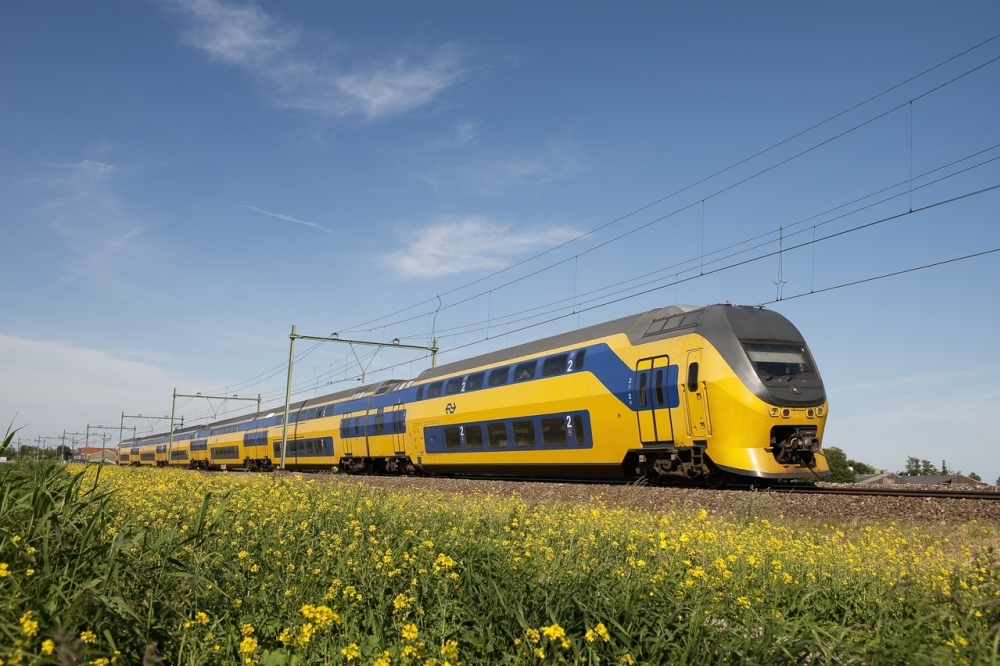The TRAIN
Schiphol Airport is located outside the city of Amsterdam, the Schiphol Express train is the best way to get there. There are several reasons for this:
Speed: The train connects Schiphol Airport to Amsterdam city center in just 15-20 minutes, making it the fastest option.
Frequency: The train runs regularly, every 10 to 15 minutes, 24 hours a day.
Cost: The cost of the train ticket is relatively inexpensive compared to other transport options, such as taxi or bus.
Accessibility: Schiphol train station is located directly below the airport, making it easily accessible for travelers with their luggage.
Comfort: Trains are generally clean and comfortable, with spacious seats and amenities such as toilets and luggage storage.
In summary, the train is the best way to reach Amsterdam city center from Schiphol Airport due to its speed, frequency, reasonable cost, accessibility and comfort.

AMSTERDAM
Amsterdam has a rich and varied history, dating back to the 13th century. At that time, Amsterdam was a small fishing village located on the banks of the Amstel, hence its name. Over time, the city developed as an important commercial center, thanks in particular to its privileged geographical position between the North Sea and the Baltic Sea.
In the 16th century, Amsterdam became a prosperous city thanks to its flourishing trade with the countries of Northern Europe. The city was also a center of the Protestant Reformation, with figures such as Calvinist theologian Johannes Calvin and philosopher Baruch Spinoza. In the 17th century, Amsterdam became the financial center of the world, with a stock exchange that attracted investors from all over the world.
In the 18th century, Amsterdam began to lose its status as a leading commercial and financial city, partly due to increased competition from London and Paris. The city was also affected by the French Revolution and the Napoleonic Wars, which led to a downfall in the economy and a loss of political power.
In the 19th century, Amsterdam became an important industrial city, with the development of the textile industry, shipbuilding and the sugar refinery. The city has also experienced significant population growth, with the arrival of foreign workers and the construction of social housing.
In the 20th century, Amsterdam was affected by two world wars, which resulted in massive destruction of the city and loss of life. After World War II, Amsterdam experienced a period of reconstruction and economic prosperity, with rapid growth in industry and tourism.
Today, Amsterdam is a cosmopolitan and multicultural city, which attracts millions of visitors every year. The city is famous for its scenic canals, historic architecture, world-class museums, vibrant nightlife, and liberal culture. Amsterdam is also known for its commitment to sustainability and innovation, with projects such as the Floating Farm, the Energy Self-Sufficient District and the development of hydrogen technology.
MUST DO
Amsterdam is a beautiful and diverse city that offers a wide variety of tourist attractions. Here are the 10 must-see places to visit in Amsterdam:
The Rijksmuseum: This museum is one of the most important in Amsterdam and houses a large collection of art and historical artefacts, including works by Rembrandt and Vermeer.
The Van Gogh Museum: This museum houses the largest collection of works by Vincent van Gogh, with more than 200 paintings and 500 drawings, as well as works by other artists of the time.
The Anne Frank House: The house where Anne Frank and her family hid during the Second World War has become a museum, which allows you to discover the life of Anne Frank during this period.
The Flower Market: Amsterdam's Floating Flower Market is a market famous for its tulips, narcissus and other flowers.
The Red Light District: The Red Light District is one of Amsterdam's most famous districts, with its shop windows and bars.
The Canal Belt: Amsterdam's canals are a UNESCO World Heritage Site and make for a pleasant walk to explore the city.
The Rembrandt House: The house where Rembrandt lived for many years has become a museum which presents the artist and his work.
The Resistance Museum: This museum traces the history of the Dutch resistance during the Second World War and houses many exhibits and historical objects.
The Royal Palace of Amsterdam: This palace, located on Dam Square, is open to the public and allows you to discover the history of the Dutch monarchy.
The Vondelpark: The Vondelpark is a large public park where one can relax, cycle or jog, or simply enjoy a day outdoors.
These 10 tours are essential to discover Amsterdam and its history, culture and tourist attractions.